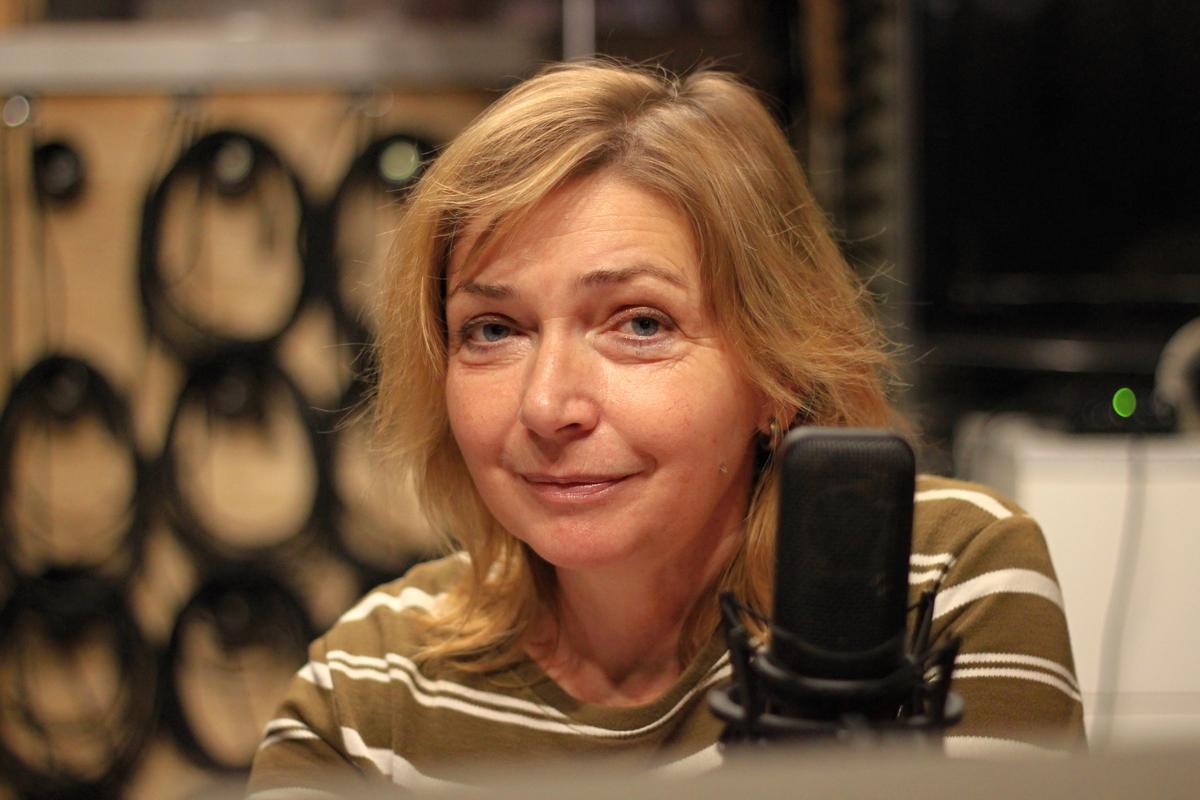According to Jitka Tejnorová, onboarding starts long before a new person actually starts. “The first impression a candidate gets is the moment he or she meets the company for the first time. For example, at a reception or during an interview. Already then a kind of bond begins to form,” explains Jitka Tejnorová. The really sensitive phase comes when the candidate decides to accept the offer but still remains in his or her original job. During this period, which often lasts up to two months, it is particularly important that the company does not remain passive.
“Changing jobs is stressful, comparable to losing a close friend, according to research. And that’s when doubts and new offers arise. Unfortunately, most companies are silent at that moment,” says Tejnorová, adding that even a small contact such as asking whether a new colleague wants a red or blue chair can play a crucial role. Pre-onboarding can be partially automated with HR software that can send out documents or access data. However, personal contact remains irreplaceable.
The whole process is energy-intensive, especially for the employee. He or she is going through a series of changes, leaving the environment he or she knows and at the same time wanting to show up in a new one. Even the initial medical examination can be a stressful moment.
The first day at work plays an important role. “It’s actually the second first impression,” says Jitka Tejnorová. The details are crucial – a prepared place, a working computer, a receptionist who knows about the newcomer. At DMC, they work with the “Mystery Employee” methodology, in which they evaluate a new employee’s first day according to a predefined checklist. “The results are often dismal, the new person doesn’t have the tools, the attitude, the team doesn’t know about them,” he says.
But onboarding is not only in the hands of the HR department. The team a newcomer joins plays a big role. “We can have the best onboarding, but if the team or the leaders are not ready to accept the new person, the result will not be good.” In such cases, DMCs use team constellations to uncover hidden dynamics, such as hostility toward a new boss who has “taken the place” of an existing team member.
In terms of measuring efficiency, Jitka Tejnorová says it is essential to monitor, for example, the initial turnover, i.e. how many people leave within three months, or the adaptation time, how long it takes before an employee starts to perform as expected. “We use the TWI Job Instruction methodology, where we know exactly who will teach the new person, what, when and how,” she explains. Onboarding must be systematic and detailed, including a precise training schedule.
Ongoing evaluation is also important. Both on the part of the company and on the part of the newcomer. “After each training cycle, I ask if the person feels able to work independently. Feedback is key,” He adds. And it is based on this data that it is possible to identify weaknesses or problems in a particular team.
When asked when onboarding ends, Tejnorová replies that it is not always possible to say that it must be the end of the probationary period. “In some professions it can be a month, in others a whole year. Each process needs to be adapted to the specific position.”
In addition to savings, well set up onboarding brings higher employee satisfaction. People have the feeling that they are cared about, that they are perceived. “We can’t solve all the problems, but just the fact that we are asking is of great importance. Relationship and respect are essential. And happy employees make fewer mistakes, perform better and work better together.”
And how long does it take to turn a dysfunctional onboarding system into one that delivers results for a company? According to Jitka Tejnorová, the first changes can be observed after only two months of the pilot project. “But it takes about a year and a half for onboarding to become a regular part of company life.”
PODCAST TRANSCRIPT:
Tomas Pospíchal: Our guest today is Jitka Tejnorová, founder and managing director of DMC Management Consulting and TWI Master Trainer. I am happy to welcome you back to our podcast. As part of our already quite regular meetings, not only on TWI topics, this time I would like to focus on the evergreen in the field of HR – onboarding, i.e. adaptation of new employees to new environment and working conditions. I know that you personally and the DMC have been involved in this topic for a long time, which is why you are here with us today. If you had to rate the importance of onboarding in the work of an HR manager on a scale of 1 to 10 (where 10 is the maximum priority), how much would you choose?
Jitka Tejnorová: Onboarding affects absolutely all costs and company performance. If I manage onboarding right the first time, it doesn’t increase the cost of further recruitment. When I have well-trained people, there are no mistakes, delays or waste. And it also improves company culture and workplace relationships.
Tomas Pospíchal: If we look at onboarding through the eyes of a candidate – doesn’t the process start the moment I send my CV or come for an interview?
Jitka Tejnorová: Definitely yes. You get the first impression when you first come into contact with the organisation. For example, how they treat you at the reception or the reception desk, how the recruiter or the future supervisor communicates. Even then, you start to form a kind of emotional pouch, a bond with the company. Then, when we select a suitable candidate and agree on cooperation, the so-called pre-onboarding phase comes. This is the period when the HR department should be active, because it is a very fragile phase. Often we still have employees for two months “remotely” before they end up in their old job.
Tomas Pospíchal: What typically happens during those two months?
Jitka Tejnorová: A candidate often hesitates whether he or she has made the right decision. According to research, changing jobs is very stressful. It scores around 39 on the stressful events scale, which corresponds to the loss of a close friend. That’s when new job offers start to come in. Plus the current employer starts applying pressure: persuasion, better offers, higher pay… There are a lot of questions going on in a person’s head. Do I really have to leave? Isn’t it better to stay in the environment I know?
Tomas Pospíchal: And what do most future employers do?
Jitka Tejnorová: Unfortunately, she is silent. And that’s a mistake. I recommend that pre-onboarding is active. For example, regular communication, informal introductions with the team, sending documents to study, or even asking if a new colleague wants a red or blue chair. Even such a small thing will show that you are looking forward to being counted on.
Tomas Pospíchal: Can all this be automated using HR software?
Jitka Tejnorová: Yes, many HR software already have pre-boarding modules. They send standardized information, access rights, documents, training. But I also recommend personal contact – call, see if everything is in order. The human factor is still important. You can tell if something’s wrong, for example, by the fact that they stop answering the phone or responding to emails.
Tomas Pospíchal: Is the process energy intensive?
Jitka Tejnorová: Especially for a new employee. They are going through a lot of changes, saying goodbye to the previous environment and starting in a new one. Even the initial medical check-up can be stressful. He wants to prove he can do the job. So yes, energetically it’s a challenging time.
Tomas Pospíchal: And when a new colleague starts, what do you think the ideal first day should look like?
Jitka Tejnorová: The first day is like a second first impression. Every little thing makes a difference. If the receptionist knows about you, if you have a place ready, an e-mail, a computer. At DMC we have a “Mystery Employee” methodology, which is a secret employee who evaluates the first day according to a checklist. And the results are often dismal, chaos, no one knows the new person is coming in, they don’t have tools, they don’t have access. The day should be well prepared – not only organizationally, but also in terms of the psychology of learning. It should alternate between theory and practice, for example a safety presentation followed by a pick-up of clothes or a tour of the workplace. Otherwise, after two hours he doesn’t know what he has signed.
Tomas Pospíchal: What is the role of HR in how a newcomer is received by the team?
Jitka Tejnorová: HR has limited possibilities, it can prepare great onboarding, but if the team or leaders are not ready, the result will not be good. There are teams that are not willing to take on a newcomer. The reason may be because their favorite colleague left or because someone thought they would get the position. In such cases, we work with the team constellation methodology, uncovering hidden dynamics and blocks in the team.
Tomas Pospíchal: Do you have a specific example?
Jitka Tejnorová: One client experienced that the new manager left after half a day. After lunch, he packed his things and went home. He was the third in line. The HR director rightly said “enough” and we went to find out the reasons – workshops, questionnaires, constellations. And it turned out that the problem was not the managers, but the team, who were not ready to accept authority from outside.
Tomas Pospíchal: Can we measure onboarding? What are the key metrics in your opinion?
Jitka Tejnorová: We use the TWI Job Instruction methodology – systematic training conducted by an internal trainer. We measure the process. For example, we track initial turnover, i.e. how many people leave within three months. We also track the adaptation time, how long we pay an employee before they become truly productive.
Tomas Pospíchal: Are the metrics you talked about valid for both manufacturing and services?
Jitka Tejnorová: I think this is true in general. Every company or activity will have slightly different metrics, of course. However, training time is important, as are clearly set expectations and separate tasks during the probationary period. And turnover during the probationary period is again another metric.
Tomas Pospíchal: What is the impact of recruitment on successful onboarding?
Jitka Tejnorová: I know this is a rather utopian question at a time when unemployment is around 2-3%. But it is important that both sides approach recruitment responsibly. If you recruit an employee who you can see from the beginning is not the right fit, but “somehow” passes the criteria, you cannot expect it to be better. And it won’t get better.
In times of low unemployment it is difficult, but we still have to recruit people primarily on the basis of values, character and behaviour. Based on what’s key to us. For example, I really liked Toyota’s approach: ‘We can teach the person the activity, we have a system for that. But we can’t teach character.” And that’s true – personality behavior just doesn’t change. What’s important is to pick a person who fits in, who fits our parameters personally, and then train them well, and train them systemically: knowing who’s going to teach them, when, what, and how we’re going to measure that they’ve actually learned it. As the old ancient saying goes: A fox changes his fur, but not his habits.
Tomas Pospíchal: If you had to say in short what are the main points of successful onboarding, what would you recommend?
Jitka Tejnorová: The first point is to have clearly defined selection criteria in the recruitment process. It’s not just about manual skills or professional knowledge, but mainly about personal competencies – the ability to lead people in management or certain cognitive and behavioural qualities.
Furthermore, it is important to have a well-managed pre-onboarding. Stay in touch with the candidate before onboarding. This is followed by a well-prepared first day, ideally using interactive and gamified elements. At Miele, for example, they have a puzzle with the company logo in the training centre. This helps identification with the brand right from the start.
The important thing is to be prepared. Have the tools, the workplace, the access data ready for the new person. Training must be systematic. The manager cannot be there all the time, so you need to have internal mentors or trainers. If you set up the adaptation process in detail, really every minute, you can reduce the adaptation time by up to two thirds.
This includes regular evaluation by the company and the newcomer. Asking how they feel, if they are ready to work independently. I, for example, ask after each training cycle if he already feels capable of performing the activity on his own. Feedback is important. And also measurable indicators – the effectiveness of the adaptation process and the reasons for any departures during the probationary period. If turnover is recurring in a particular position or team, you also need to look at the team as a whole and look for deeper causes.
Tomas Pospíchal: When does onboarding end? Is it a probationary period?
Jitka Tejnorová: It doesn’t have to be a trial period. In production professions, a month is often enough. But usually the adaptation process is planned for the trial period. It represents a certain milestone when you move to a higher level, when you can say, “I am yours now.” And it is good to celebrate these moments, to give it symbolic weight, perhaps in the form of an award, a qualification matrix, etc.
For more complex positions, the adaptation process can take even longer, up to a whole year. In healthcare, for example, you learn the basics in the first few months, but it takes longer to gradually gain experience and qualifications. The process therefore needs to be adapted to the specific position and the needs of the organisation.
Tomas Pospíchal: What does a well set up onboarding bring me?
Jitka Tejnorová: In addition to lower turnover and cost savings, higher employee satisfaction. This can be measured, for example, through surveys. People perceive that someone is paying attention to them, that they are listened to. Not all problems can be solved, but the fact that we ask is very important. Relationship and respect are the basis. And happy employees also mean better results – fewer rejects, shorter production times, higher productivity.
Tomas Pospíchal: How long does it take to transform onboarding from dysfunctional to a state where the client is satisfied?
Jitka Tejnorová: We can see the first results of the pilot project in about 8 weeks. But it takes about a year and a half for the new onboarding to really become a normal part of the life of the organization.






